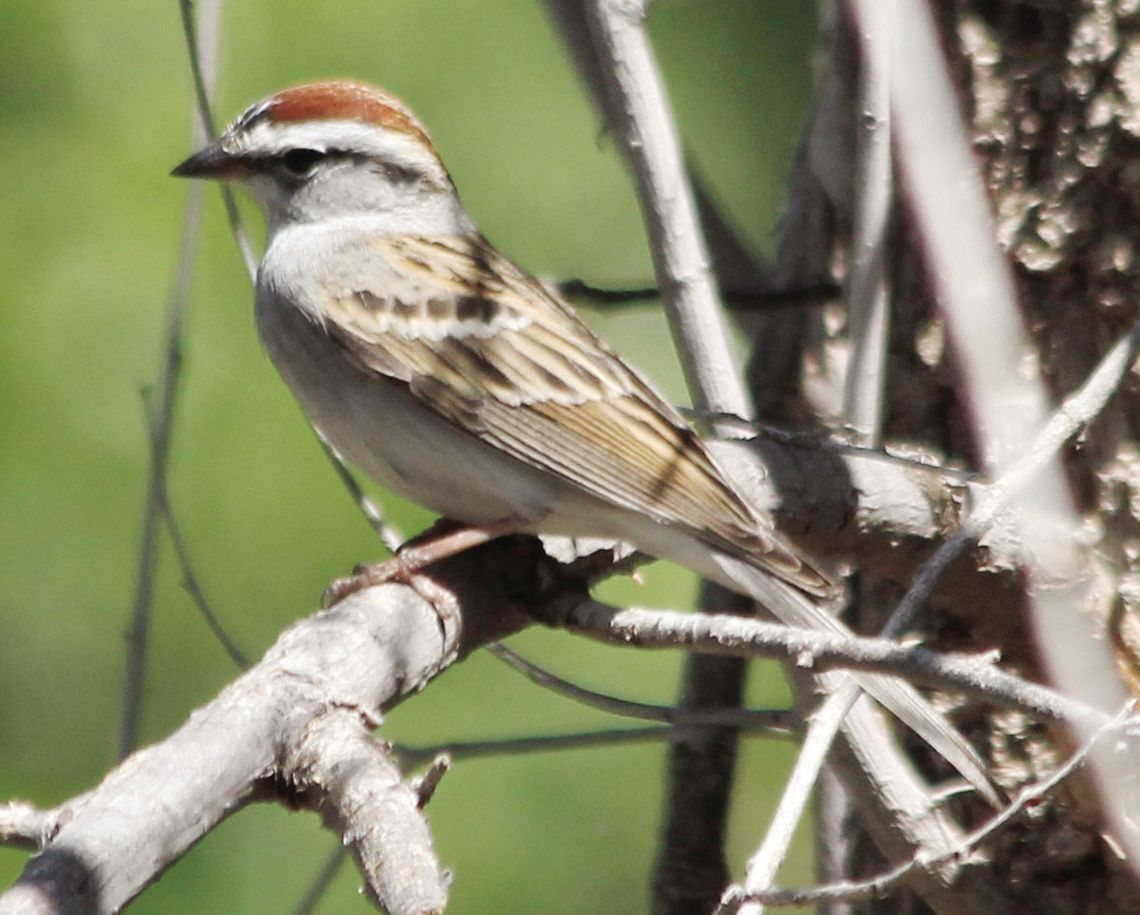In regards to bird identification, a dear friend who just so happened to be a biologist from Texas Parks and Wildlife once told me, “If it soars, it is a hawk; if it swims, it is a duck; everything else is just sparrows”. He was being facetious of course, but all too often, many amateur bird enthusiasts will employ this broad description. And it is quite effortless to do, especially with the sheer number and similarities of this large avian family. A few species “stand out” however, and one species known as the Chipping Sparrow fits that bill.
Chipping Sparrows (Spizella passerina) are easily spotted in city parks, backyards, and other areas that have a mixture of trees and open grassy zones throughout Texas. In all but the lower Rio Grande valley they are summer residents in this state, spending their winters in central Mexico. Outside of Texas they may be observed throughout the continental United States, again primarily during the summer months.
At first glance, Chipping Sparrows look superficially like the widespread non-native House Sparrow. Their body size is a mere 5 inches in length with a wingspan of only 8-9 inches. The upperparts are light brown and have an array of black and brown streaking running diagonally along the backside. The underparts, including the chin, are gray and are devoid of any pattern (in adults anyway). The wings are colored and patterned in the same fashion as the upperparts, save for 2 white wing bars. The distinctiveness of this species is the chestnut-colored patch that adorns the top (or cap) of the head. This colored cap is separated from the black bill by a white line on the forehead. There is a black line that originates at the black bill and extends through the eye to the ear. Juveniles are comparable to adults in color and pattern except the breast is marked with brown dots and the chestnut-colored cap is not nearly as pronounced.
The majority of the time, this species seemingly prefers to live either singly or in pairs, although during the winter months and during the spring breeding season it may congregate into small flocks to feed. After breeding, the female will assemble a cup-shaped opentopped nest constructed from grass, hair, and weed stalks. This nest is typically erected between 3 and 10 feet above the ground. The diminutive 2-5 eggs are bluish-green with dark brown splotches and are only a mere ½ inch by ½ inch in size. The female incubates the eggs for about 2 weeks, and both parents will feed the hatchlings an additional 2 weeks until the young are able to leave the nest. Many times, the family unit will stay together for several weeks. This species tends to breed twice annually.
Studies have shown that the population dynamics of this neotropical migrant species is stable and in fact is quite abundant in many areas. This species is attracted to sunflower and other types of seeds, and some individuals become so accustomed to humans that they will accept food from a person’s hand.





















